Our universe is defined by the way it moves, and one way to describe the history of science is through our increasing awareness of the restlessness of the cosmos.
Continue reading “The Universe is on the Move”The Universe is on the Move
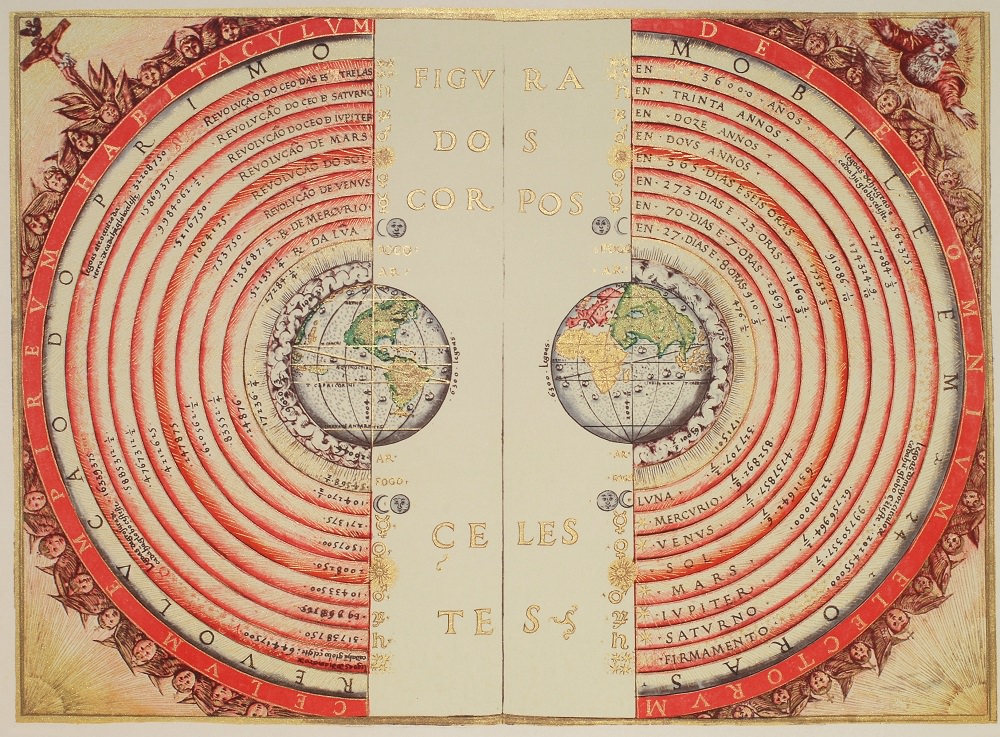

Our universe is defined by the way it moves, and one way to describe the history of science is through our increasing awareness of the restlessness of the cosmos.
Continue reading “The Universe is on the Move”For thousands of years, humans have been studying the heavens, seeking to find patterns and predictability in their movements. This tradition goes all the way back to prehistory, where hunter-gatherer societies assigned characteristics to asterisms and celestial bodies. And from the 2nd millennium onward, magi and astronomers began recording the movements of the constellations and the planets through the zodiac.
By classical antiquity, attempts began to create astrolabes and other devices that would allow astronomers to know where the stars and planets were at any given time. These would eventually culminate in the creation of the orrery, a mechanical device that attempts to recreate the Solar System and the movements of its planets and moons around our Sun.
Traditionally, an orrery is a mechanical model of the Solar System, or at least the major planets. This device is driven by a clockwork mechanism that simulates the motion of the planets (and, in some cases, major moons) around the Sun. This last feature is key, since most known orreries were produced during the early modern period and after, when the Heliocentric model of the Solar System came to be the accepted one.
Orreries are typically driven by a clockwork mechanism with a globe representing the Sun at the center, and with a planet at the end of each of the arms. They are usually not to scale, partly because of the difficulty of mechanically modeling the distances involved, the eccentricity of various planets’ orbits, and the planets’ massive differences in terms of size.
Though many working planetaria were created during Classical Antiquity, the first orrery of the modern era was produced in 1704 by clock makers George Graham and Thomas Tompion. The name is derived from Charles Boyle, the 4th Earl of Orrery, England, who commissioned famed instrument maker John Rowley to build one in 1713 based on the design of Graham and Tompion.
The Antikythera mechanism, which is dated to ca. 150 – 100 BCE, may be considered the first orrery that is still in existence. Discovered in the wreck of a ship in 1900 off the Greek island of Antikythera (hence the name), this device consisted of hand-driven mechanisms that represented the diurnal motions of the Sun, the Moon, and the then-known five known planets (Mercury, Venus, Earth, Mars, Jupiter).
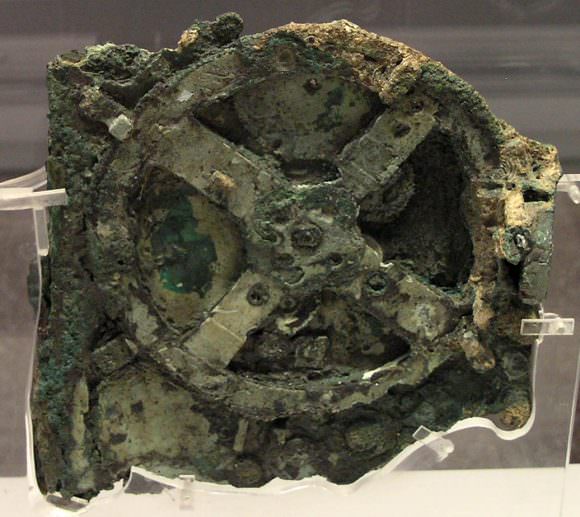
Reflecting the cosmological view of the Greeks, the device was geocentric in nature and was used as a mechanical calculator designed to determine astronomical positions. According to Roman philosopher Cicero (106 – 43 BCE), the Syrian-born Greek philosopher Posidonius of Rhodes (ca. 135 – 51 BCE ) built a planetary model as well. With the fall of the Roman Empire, the art would not be resurrected until the late Medieval Period.
In 1348, Italian doctor and clock maker Giovanni Dondi built the first known clock-driven mechanism which displayed the position of Moon, Sun, Mercury, Venus, Mars, Jupiter and Saturn along the ecliptic – according to the Ptolemaic (geocentric) model of the Solar system. At present, only a written account survives, but it is extremely detailed in its description of the mechanisms involved.
During the 16th century, two astronomical clocks were built for the court of William IV, Langrave of Hesse-Kassel (in modern day Bavaria, Germany). These showed the motions of the Sun, Moon, Mercury, Venus, Mars, Jupiter and Saturn based on the Ptolemaic system. These clocks are now on display at the Museum of Physics and Astronomy and the Royal Cabinet of Mathematical and Physical Instruments (in Kassel and Dresden, respectively).
Thanks to Copernicus’s proposal of the Heliocentric model of the Universe, Isaac Newton’s Law of Universal Gravitation, and other discoveries that took place during the Scientific Revolution, orreries changed significantly by the early modern period. In essence, the Heliocentric model simplified the apparent orbits of the planets around the Sun, to the point that they could be represented as simple circles or ellipses.
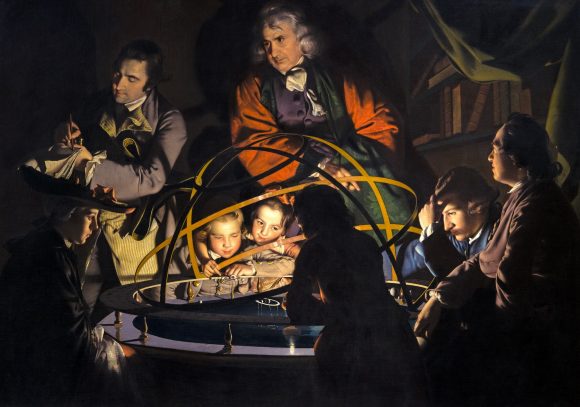
As noted, the first modern orrery was created in 1704 in England by clock makers George Graham and Thomas Tompion. This design was given to instrument maker Jon Rowely, who then produced a copy for the Prince Eugene of Savoy and was commissioned by his patron – Charles Boyle – to build them for himself and his son John – who would go on to become the 5th Earl of Orrery (and the 5th Earl of Cork).
Between 1665 and 1681, while in Paris, Christiaan Huygens created a heliocentric planetary machine that represented a year and the cycles of the then-known planets. He would go on to publish papers describing its functions by 1703. The painting “A Philosopher giving a Lecture on the Orrery in which a lamp is put in place of the Sun”, which Jospeh Wright completed in 1766, features a brass orrery as its centerpiece.
Between 1774 and 1781, Eisinga’s Planetarium was built in Franeker, in the Netherlands by amateur Frisian astronomer Eise Eisinga. Central to the planetarium is an orrery which shows the orbits of the planets across the width of the room’s ceiling. The clockwork machine that powers it has been in almost continuous operation since it first opened.
In 1764, Benjamin Martin invented a new type of orrery that relied on three parts – the planetarium where the planets revolved around the Sun; the tellurion, which showed the inclined axis of the Earth and how it revolved around the Sun; and the lunarium which showed the eccentric rotations of the Moon around the Earth. This allowed for a more accurate representations of the Solar System, which included the planet’s inclinations, relative to the Sun.
Today, with immense amounts of low-cost computing power available, software has been developed to calculate the relative positions and motions of Solar System bodies. Examples of these “digital orreries” include a java applet used at the Department of Physics at the University of Texas at Austin, and Orrery, a Solar System Visualizer from The Geometry Center at the University of Minnesota (which relies on Unix).
There is also the Digital Orrery, a special-purpose computer designed to model the long term motions of the outer planets of the Solar System. Constructed in 1985, it was built to answer a long-standing question about the Solar System, which is whether or not it is stable (invariably, the answer was a big no). This device is now at the Smithsonian Institution in Washington, DC.
And in 2013, the first virtual orrery was created by the Cattle Point Foundation at the DARK SKY Urban Star Park, located in Oak Bay, British Columbia. The orrery is called “The Salish Sea Walk of the Planets“, and was built with Google Maps to avoid negatively impacting the park and the nearby Orca and wildlife sanctuaries. This orrery has now extended beyond the Star Park to become the world largest, covering a distance of over 8,500 km (5,300 mi).
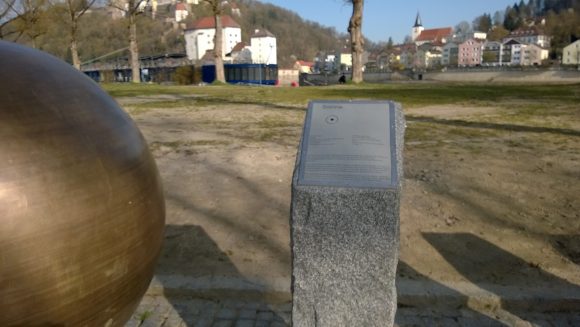
The Sun is located in the Star Park in Oak Bay (shown above) while Pluto (the most distant “planet”) is located in Bamfield on the western side of Vancouver Island, BC. The Kuiper Belt Objects are situated north in the small towns of Ucluelet and Tofino while the farthest object within our Solar System – the Oort Cloud – is across the sea at the Canadian Embassy in Beijing, China.
Meanwhile, physical orreries still exist in many locations. For example, there’s The York Solar System Model Orrery, a special bike path constructed in 1999 and maintained by York University in the UK. Spread out along 10.3 km (6.4 miles) of the old East Coast main-line railway, this scale model of the Solar System contains all the planets of the Solar System, as well as models of the Cassini and Voyager spacecraft.
There is also the “Path of the Planets Uetliberg–Felsenegg“, which follows a hiking trail along the Albis (a chain of hills in Switzerland). The path was designed by Arnold von Rotz to be a 1:1 billion scale model of the Solar System (where 1 meter equals 1 billion km). The path runs from the towns of Uetliberg to Felsenegg (which is about 2 hours away on foot) and opened on April 26th, 1979.
Each planet is represented by a large orb that is mounted to a boulder or affixed inside one (depending on their size) and has a sign that includes the body’s place in the Solar System and their basic info (like equatorial diameter, rotational speed, etc.)
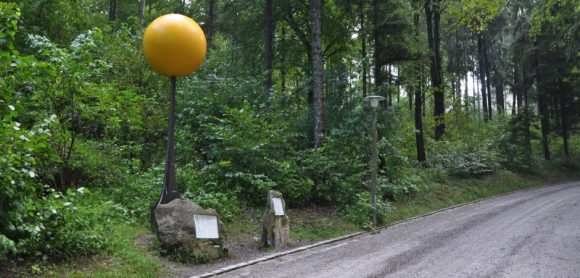
There’s also The Human Orrery, which is located at Armagh Observatory, in Northern Ireland. This orrery allows people to play the part of the planets of Mercury, Venus, Earth, Mars, Jupiter, and Saturn, as well as Ceres and two comets (1P/Halley and 2P/Encke). Due to their immense distance, and the fact the orrery is to scale, Uranus and Neptune are not included.
From our humble beginnings as hunter-gatherers who looked up at the stars and discerned patterns in their appearance, humanity has come a long way in terms of its understanding of the Universe. As we invented devices to look deeper into the night sky, and even explore space directly, our models have matured accordingly, growing in terms of accuracy and complexity.
That tradition continues, with more mission to study and explore the outer Solar System proceeding apace. Future orreries are likely to take advantage of all this, leveraging new technologies and new information to create even more detailed and interesting representations of our cosmic background!
We have written many interesting articles about the planets here at Universe Today. Here’s The Solar System Guide, What is the Geocentric Model of the Universe?, What is the Heliocentric Model of the Universe?, What is the Difference Between the Geocentric and Heliocentric model of the Solar System?, and How Many Planets are in the Solar System?
Source:

During the many thousand years that human beings have been looking up at the stars, our concept of what the Universe looks like has changed dramatically. At one time, the magi and sages of the world believed that the Universe consisted of a flat Earth (or a square one, a zigarrut, etc.) surrounded by the Sun, the Moon, and the stars. Over time, ancient astronomers became aware that some stars did not move like the rest, and began to understand that these too were planets.
In time, we also began to understand that the Earth was indeed round, and came up with rationalized explanations for the behavior of other celestial bodies. And by classical antiquity, scientists had formulated ideas on how the motion of the planets occurred, and how all the heavenly orbs fit together. This gave rise to the Geocentric model of the universe, a now-defunct model that explained how the Sun, Moon, and firmament circled around our planet.
Continue reading “What Is The Geocentric Model Of The Universe?”

The Scientific Revolution, which took place in the 16th and 17th centuries, was a time of unprecedented learning and discovery. During this period, the foundations of modern science were laid, thanks to breakthroughs in the fields of physics, mathematics, chemistry, biology, and astronomy. And when it comes to astronomy, the most influential scholar was definitely Nicolaus Copernicus, the man credited with the creation of the Heliocentric model of the Universe.
Based on ongoing observations of the motions of the planets, as well as previous theories from classical antiquity and the Islamic World, Copernicus’ proposed a model of the Universe where the Earth, the planets and the stars all revolved around the Sun. In so doing, he resolved the mathematical problems and inconsistencies arising out of the classic geocentric model and laid the foundations for modern astronomy.
While Copernicus was not the first to propose a model of the Solar System in which the Earth and planets revolved around the Sun, his model of a heliocentric universe was both novel and timely. For one, it came at a time when European astronomers were struggling to resolve the mathematical and observational problems that arose out of the then-accepted Ptolemaic model of the Universe, a geocentric model proposed in the 2nd century CE.
In addition, Copernicus’ model was the first astronomical system that offered a complete and detailed account of how the Universe worked. Not only did his model resolves issues arising out of the Ptolemaic system, it offered a simplified view of the universe that did away with complicated mathematical devices that were needed for the geocentric model to work. And with time, the model gained influential proponents who contributed to it becoming the accepted convention of astronomy.

The geocentric model, in which planet Earth is the center of the Universe and is circled by the Sun and all the planets, had been the accepted cosmological model since ancient times. By late antiquity, this model had come to be formalized by ancient Greek and Roman astronomers, such as Aristotle (384 – 322 BCE) – who’s theories on physics became the basis for the motion of the planets – and Ptolemy (ca. 100 – ca.?170 CE), who proposed the mathematical solutions.
The geocentric model essentially came down to two common observations. First of all, to ancient astronomers, the stars, the Sun, and the planets appeared to revolve around the Earth on daily basis. Second, from the perspective of the Earth-bound observer, the Earth did not appear to move, making it a fixed point in space.
The belief that the Earth was spherical, which became an accepted fact by the 3rd century BCE, was incorporated into this system. As such, by the time of Aristotle, the geocentric model of the universe became one where the Earth, Sun and all the planets were spheres, and where the Sun, planets and stars all moved in perfect circular motions.
However, it was not until Egyptian-Greek astronomer Claudius Ptolemaeus (aka. Ptolemy) released his treatise Almagest in the 2nd century BCE that the details became standardized. Drawing on centuries of astronomical traditions, ranging from Babylonian to modern times, Ptolemy argued that the Earth was in the center of the universe and the stars were all at a modest distance from the center of the universe.
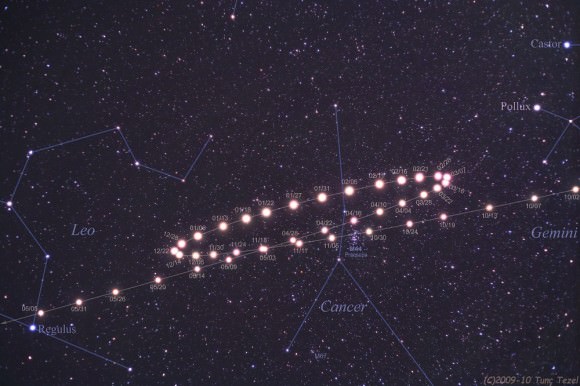
Each planet in this system is also moved by a system of two spheres – a deferent and an epicycle. The deferent is a circle whose center point is removed from the Earth, which was used to account for the differences in the lengths of the seasons. The epicycle is embedded in the deferent sphere, acting as a sort of “wheel within a wheel”. The purpose of he epicycle was to account for retrograde motion, where planets in the sky appear to be slowing down, moving backwards, and then moving forward again.
Unfortunately, these explanations did not account for all the observed behaviors of the planets. Most noticeably, the size of a planet’s retrograde loop (especially Mars) were sometimes smaller, and larger, than expected. To alleviate the problem, Ptolemy developed the equant – a geometrical tool located near the center of a planet’s orbit that causes it to move at a uniform angular speed.
To an observer standing at this point, a planet’s epicycle would always appear to move at uniform speed, whereas it would appear to be moving at non-uniform speed from all other locations.While this system remained the accepted cosmological model within the Roman, Medieval European and Islamic worlds for over a thousand years, it was unwieldy by modern standards.
However, it did manage to predict planetary motions with a fair degree of accuracy, and was used to prepare astrological and astronomical charts for the next 1500 years. By the 16th century, this model was gradually superseded by the heliocentric model of the universe, as espoused by Copernicus, and then Galileo and Kepler.
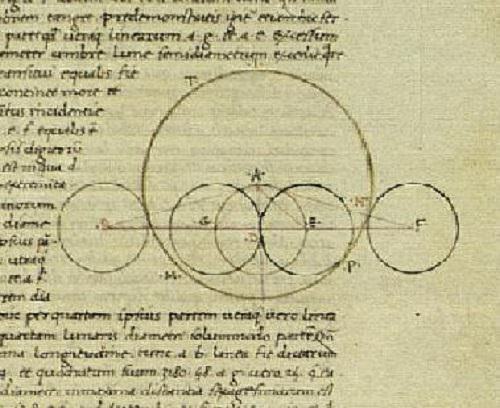
In the 16th century, Nicolaus Copernicus began devising his version of the heliocentric model. Like others before him, Copernicus built on the work of Greek astronomer Atistarchus, as well as paying homage to the Maragha school and several notable philosophers from the Islamic world (see below). By the early 16th century, Copernicus summarized his ideas in a short treatise titled Commentariolus (“Little Commentary”).
By 1514, Copernicus began circulating copies amongst his friends, many of whom were fellow astronomers and scholars. This forty-page manuscript described his ideas about the heliocentric hypothesis, which was based on seven general principles. These principles stated that:
Thereafter he continued gathering data for a more detailed work, and by 1532, he had come close to completing the manuscript of his magnum opus – De revolutionibus orbium coelestium (On the Revolutions of the Heavenly Spheres). In it, he advanced his seven major arguments, but in more detailed form and with detailed computations to back them up.

By placing the orbits of Mercury and Venus between the Earth and the Sun, Copernicus was able to account for changes in their appearances. In short, when they are on the far side of the Sun, relative to Earth, they appear smaller but full. When they are on the same side of the Sun as the Earth, they appear larger and “horned” (crescent-shaped).
It also explained the retrograde motion of planets like Mars and Jupiter by showing that Earth astronomers do not have a fixed frame of reference but a moving one. This further explained how Mars and Jupiter could appear significantly larger at certain times than at others. In essence, they are significantly closer to Earth when at opposition than when they are at conjunction.
However, due to fears that the publication of his theories would lead to condemnation from the church (as well as, perhaps, worries that his theory presented some scientific flaws) he withheld his research until a year before he died. It was only in 1542, when he was near death, that he sent his treatise to Nuremberg to be published.
As already noted, Copernicus was not the first to advocate a heliocentric view of the Universe, and his model was based on the work of several previous astronomers. The first recorded examples of this are traced to classical antiquity, when Aristarchus of Samos (ca. 310 – 230 BCE) published writings that contained references which were cited by his contemporaries (such as Archimedes).
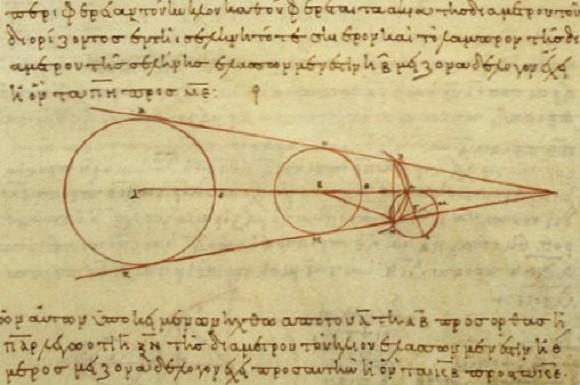
In his treatise The Sand Reckoner, Archimedes described another work by Aristarchus in which he advanced an alternative hypothesis of the heliocentric model. As he explained:
Now you are aware that ‘universe’ is the name given by most astronomers to the sphere whose center is the center of the earth and whose radius is equal to the straight line between the center of the sun and the center of the earth. This is the common account… as you have heard from astronomers. But Aristarchus of Samos brought out a book consisting of some hypotheses, in which the premises lead to the result that the universe is many times greater than that now so called. His hypotheses are that the fixed stars and the sun remain unmoved, that the earth revolves about the sun in the circumference of a circle, the sun lying in the middle of the orbit, and that the sphere of the fixed stars, situated about the same center as the sun, is so great that the circle in which he supposes the earth to revolve bears such a proportion to the distance of the fixed stars as the center of the sphere bears to its surface.
This gave rise to the notion that there should be an observable parallax with the “fixed stars” (i.e an observed movement of the stars relative to each other as the Earth moved around the Sun). According to Archimedes, Aristarchus claimed that the stars were much farther away than commonly believed, and this was the reason for no discernible parallax.
The only other philosopher from antiquity who’s writings on heliocentrism have survived is Seleucis of Seleucia (ca. 190 – 150 BCE). A Hellenistic astronomer who lived in the Near-Eastern Seleucid empire, Seleucus was a proponent of the heliocentric system of Aristarchus, and is said to have proved the heliocentric theory.
According to contemporary sources, Seleucus may have done this by determining the constants of the geocentric model and applying them to a heliocentric theory, as well as computing planetary positions (possibly using trigonometric methods). Alternatively, his explanation may have involved the phenomenon of tides, which he supposedly theorized to be related to the influence of the Moon and the revolution of the Earth around the Earth-Moon ‘center of mass’.
In the 5th century CE, Roman philosopher Martianus Capella of Carthage expressed an opinion that the planets Venus and Mercury revolved around the Sun, as a way of explaining the discrepancies in their appearances. Capella’s model was discussed in the Early Middle Ages by various anonymous 9th-century commentators, and Copernicus mentions him as an influence on his own work.
During the Late Middle Ages, Bishop Nicole Oresme (ca. 1320-1325 to 1382 CE) discussed the possibility that the Earth rotated on its axis. In his 1440 treatise De Docta Ignorantia (On Learned Ignorance) Cardinal Nicholas of Cusa (1401 – 1464 CE) asked whether there was any reason to assert that the Sun (or any other point) was the center of the universe.
Indian astronomers and cosmologists also hinted at the possibility of a heliocentric universe during late antiquity and the Middle Ages. In 499 CE, Indian astronomer Aaryabhata published his magnum opus Aryabhatiya, in which he proposed a model where the Earth was spinning on its axis and the periods of the planets were given with respect to the Sun. He also accurately calculated the periods of the planets, times of the solar and lunar eclipses, and the motion of the Moon.
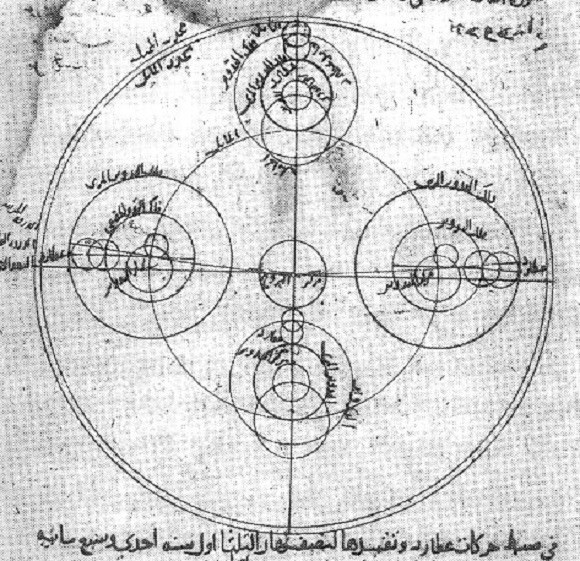
In the 15th century, Nilakantha Somayaji published the Aryabhatiyabhasya, which was a commentary on Aryabhata’s Aryabhatiya. In it, he developed a computational system for a partially heliocentric planetary model, in which the planets orbit the Sun, which in turn orbits the Earth. In the Tantrasangraha (1500), he revised the mathematics of his planetary system further and incorporated the Earth’s rotation on its axis.
Also, the heliocentric model of the universe had proponents in the medieval Islamic world, many of whom would go on to inspire Copernicus. Prior to the 10th century, the Ptolemaic model of the universe was the accepted standard to astronomers in the West and Central Asia. However, in time, manuscripts began to appear that questioned several of its precepts.
For instance, the 10th-century Iranian astronomer Abu Sa’id al-Sijzi contradicted the Ptolemaic model by asserting that the Earth revolved on its axis, thus explaining the apparent diurnal cycle and the rotation of the stars relative to Earth. In the early 11th century, Egyptian-Arab astronomer Alhazen wrote a critique entitled Doubts on Ptolemy (ca. 1028) in which he criticized many aspects of his model.
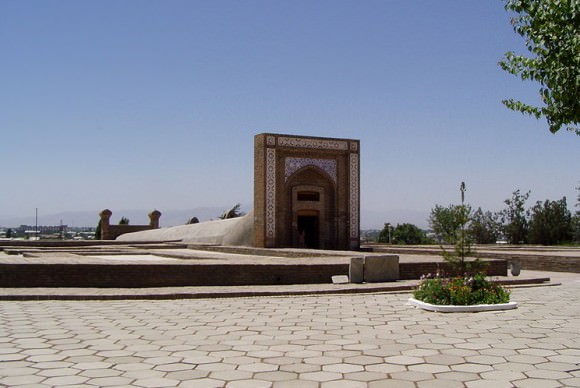
Around the same time, Iranian philosopher Abu Rayhan Biruni 973 – 1048) discussed the possibility of Earth rotating about its own axis and around the Sun – though he considered this a philosophical issue and not a mathematical one. At the Maragha and the Ulugh Beg (aka. Samarkand) Observatory, the Earth’s rotation was discussed by several generations of astronomers between the 13th and 15th centuries, and many of the arguments and evidence put forward resembled those used by Copernicus.
Despite his fears about his arguments producing scorn and controversy, the publication of Copernicu’s theories resulted in only mild condemnation from religious authorities. Over time, many religious scholars tried to argue against his model. But within a few generation’s time, Copernicus’ theory became more widespread and accepted, and gained many influential defenders in the meantime.
These included Galileo Galilei (1564-1642), who’s investigations of the heavens using the telescope allowed him to resolve what were seen as flaws in the heliocentric model, as well as discovering aspects about the heavens that supported heliocentrism. For example, Galileo discovered moons orbiting Jupiter, Sunspots, and the imperfections on the Moon’s surface – all of which helped to undermine the notion that the planets were perfect orbs, rather than planets similar to Earth. While Galileo’s advocacy of Copernicus’ theories resulted in his house arrest, others soon followed.
German mathematician and astronomer Johannes Kepler (1571-1630) also helped to refine the heliocentric model with his introduction of elliptical orbits. Prior to this, the heliocentric model still made use of circular orbits, which did not explain why planets orbited the Sun at different speeds at different times. By showing how the planet’s sped up while at certain points in their orbits, and slowed down in others, Kepler resolved this.
In addition, Copernicus’ theory about the Earth being capable of motion would go on to inspire a rethinking of the entire field of physics. Whereas previous ideas of motion depended on an outside force to instigate and maintain it (i.e. wind pushing a sail) Copernicus’ theories helped to inspire the concepts of gravity and inertia. These ideas would be articulated by Sir Isaac Newton, who’s Principia formed the basis of modern physics and astronomy.
Although its progress was slow, the heliocentric model eventually replaced the geocentric model. In the end, the impact of its introduction was nothing short of a revolutionary. Henceforth, humanity’s understanding of the universe and our place in it would be forever changed.
We have written many interesting articles on the heliocentric model here at Universe Today. For starters, here’s Galileo Returns to the Vatican and The Earth Goes Around the Sun, Who Was Nicolaus Copernicus? and What is the Difference Between the Geocentric and Heliocentric Models?
For more information on heliocentrism, take a look at these articles from NASA on Copernicus or the center of the galaxy.
Astronomy Cast also has an episode on the subject, titled Episode 77: Where is the Center of the Universe and Episode 302: Planetary Motion in the Sky.
When it comes to scientists who revolutionized the way we think of the universe, few names stand out like Galileo Galilei. A noted inventor, physicist, engineer and astronomer, Galileo was one of the greatest contributors to the Scientific Revolution. He build telescopes, designed a compass for surveying and military use, created a revolutionary pumping system, and developed physical laws that were the precursors of Newton’s law of Universal Gravitation and Einstein’s Theory of Relativity.
But it was within the field of astronomy that Galileo made his most enduring impact. Using telescopes of his own design, he discovered Sunspots, the largest moons of Jupiter, surveyed The Moon, and demonstrated the validity of Copernicus’ heliocentric model of the universe. In so doing, he helped to revolutionize our understanding of the cosmos, our place in it, and helped to usher in an age where scientific reasoning trumped religious dogma.
Galileo was born in Pisa, Italy, in 1564, into a noble but poor family. He was the first of six children of Vincenzo Galilei and Giulia Ammannati, who’s father also had three children out of wedlock. Galileo was named after an ancestor, Galileo Bonaiuti (1370 – 1450), a noted physician, university teacher and politician who lived in Florence.
His father, a famous lutenist, composer and music theorist, had a great impact on Galileo; transmitting not only his talent for music, but skepticism of authority, the value of experimentation, and the value of measures of time and rhythm to achieve success.
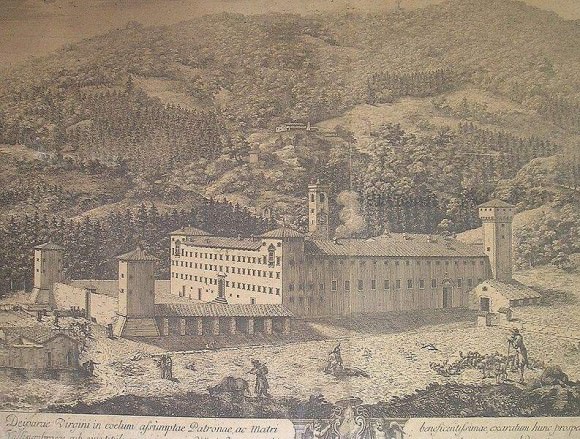
In 1572, when Galileo Galilei was eight, his family moved to Florence, leaving Galileo with his uncle Muzio Tedaldi (related to his mother through marriage) for two years.When he reached the age of ten, Galileo left Pisa to join his family in Florence and was tutored by Jacopo Borghini -a mathematician and professor from the university of Pisa.
Once he was old enough to be educated in a monastery, his parents sent him to the Camaldolese Monastery at Vallombrosa, located 35 km southeast of Florence. The Order was independent from the Benedictines, and combined the solitary life of the hermit with the strict life of a monk. Galileo apparently found this life attractive and intending to join the Order, but his father insisted that he study at the University of Pisa to become a doctor.
While at Pisa, Galileo began studying medicine, but his interest in the sciences quickly became evident. In 1581, he noticed a swinging chandelier, and became fascinated by the timing of its movements. To him, it became clear that the amount of time, regardless of how far it was swinging, was comparable to the beating of his heart.
When he returned home, he set up two pendulums of equal length, swinging one with a large sweep and the other with a small sweep, and found that they kept time together. These observations became the basis of his later work with pendulums to keep time – work which would also be picked up almost a century later when Christiaan Huygens designed the first officially-recognized pendulum clock.
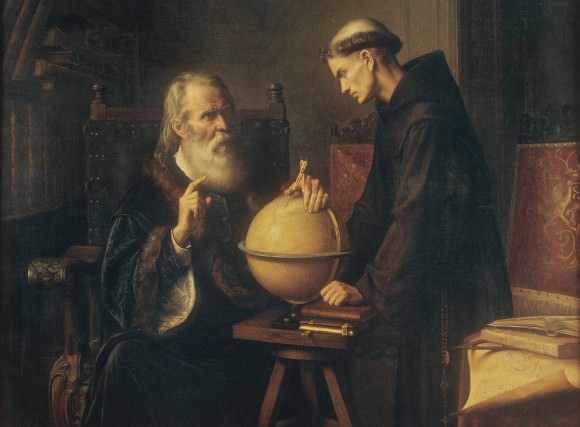
Shortly thereafter, Galileo accidentally attended a lecture on geometry, and talked his reluctant father into letting his study mathematics and natural philosophy instead of medicine. From that point onward, he began a steady processes of inventing, largely for the sake of appeasing his father’s desire for him to make money to pay off his siblings expenses (particularly those of his younger brother, Michelagnolo).
In 1589, Galileo was appointed to the chair of mathematics at the University of Pisa. In 1591, his father died, and he was entrusted with the care of his younger siblings. Being Professor of Mathematics at Pisa was not well paid, so Galileo lobbied for a more lucrative post. In 1592, this led to his appointment to the position of Professor of Mathematics at the University of Padua, where he taught Euclid’s geometry, mechanics, and astronomy until 1610.
During this period, Galileo made significant discoveries in both pure fundamental science as well as practical applied science. His multiple interests included the study of astrology, which at the time was a discipline tied to the studies of mathematics and astronomy. It was also while teaching the standard (geocentric) model of the universe that his interest in astronomy and the Copernican theory began to take off.
In 1609, Galileo received a letter telling him about a spyglass that a Dutchman had shown in Venice. Using his own technical skills as a mathematician and as a craftsman, Galileo began to make a series of telescopes whose optical performance was much better than that of the Dutch instrument.

As he would later write in his 1610 tract Sidereus Nuncius (“The Starry Messenger”):
“About ten months ago a report reached my ears that a certain Fleming had constructed a spyglass by means of which visible objects, though very distant from the eye of the observer, were distinctly seen as if nearby. Of this truly remarkable effect several experiences were related, to which some persons believed while other denied them. A few days later the report was confirmed by a letter I received from a Frenchman in Paris, Jacques Badovere, which caused me to apply myself wholeheartedly to investigate means by which I might arrive at the invention of a similar instrument. This I did soon afterwards, my basis being the doctrine of refraction.”
His first telescope – which he constructed between June and July of 1609 – was made from available lenses and had a three-powered spyglass. To improve upon this, Galileo learned how to grind and polish his own lenses. By August, he had created an eight-powered telescope, which he presented to the Venetian Senate.
By the following October or November, he managed to improve upon this with the creation a twenty-powered telescope. Galileo saw a great deal of commercial and military applications of his instrument(which he called a perspicillum) for ships at sea. However, in 1610, he began turning his telescope to the heavens and made his most profound discoveries.
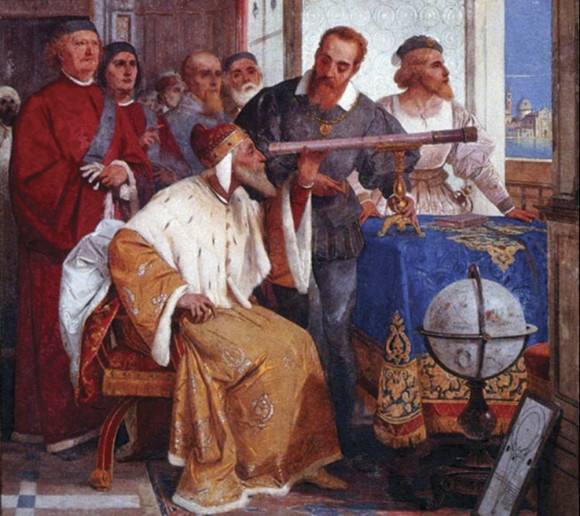
Using his telescope, Galileo began his career in astronomy by gazing at the Moon, where he discerned patterns of uneven and waning light. While not the first astronomer to do this, Galileo artistic’s training and knowledge of chiaroscuro – the use of strong contrasts between light and dark – allowed him to correctly deduce that these light patterns were the result of changes in elevation. Hence, Galileo was the first astronomer to discover lunar mountains and craters.
In The Starry Messenger, he also made topographical charts, estimating the heights of these mountains. In so doing, he challenged centuries of Aristotelian dogma that claimed that Moon, like the other planets, was a perfect, translucent sphere. By identifying that it had imperfections, in the forms of surface features, he began advancing the notion that the planets were similar to Earth.
Galileo also recorded his observations about the Milky Way in the Starry Messenger, which was previously believed to be nebulous. Instead, Galileo found that it was a multitude of stars packed so densely together that it appeared from a distance to look like clouds. He also reported that whereas the telescope resolved the planets into discs, the stars appeared as mere blazes of light, essentially unaltered in appearance by the telescope – thus suggesting that they were much farther away than previously thought.
Using his telescopes, Galileo also became one the first European astronomer to observe and study sunspots. Though there are records of previous instances of naked eye observations – such as in China (ca. 28 BCE), Anaxagoras in 467 BCE, and by Kepler in 1607 – they were not identifies as being imperfections on the surface of the Sun. In many cases, such as Kepler’s, it was thought that the spots were transits of Mercury.
In addition, there is also controversy over who was the first to observe sunspots during the 17th century using a telescope. Whereas Galileo is believed to have observed them in 1610, he did not publish about them and only began speaking to astronomers in Rome about them by the following year. In that time, German astronomer Christoph Scheiner had been reportedly observing them using a helioscope of his own design.
At around the same time, the Frisian astronomers Johannes and David Fabricius published a description of sunspots in June 1611. Johannes book, De Maculis in Sole Observatis (“On the Spots Observed in the Sun”) was published in autumn of 1611, thus securing credit for him and his father.
In any case, it was Galileo who properly identified sunspots as imperfections on the surface of the Sun, rather than being satellites of the Sun – an explanation that Scheiner, a Jesuit missionary, advanced in order to preserve his beliefs in the perfection of the Sun.
Using a technique of projecting the Sun’s image through the telescope onto a piece of paper, Galileo deduced that sunspots were, in fact, on the surface of the Sun or in its atmosphere. This presented another challenge to the Aristotelian and Ptolemaic view of the heavens, since it demonstrated that the Sun itself had imperfections.
On January 7th, 1610, Galileo pointed his telescope towards Jupiter and observed what he described in Nuncius as “three fixed stars, totally invisible by their smallness” that were all close to Jupiter and in line with its equator. Observations on subsequent nights showed that the positions of these “stars” had changed relative to Jupiter, and in a way that was not consistent with them being part of the background stars.
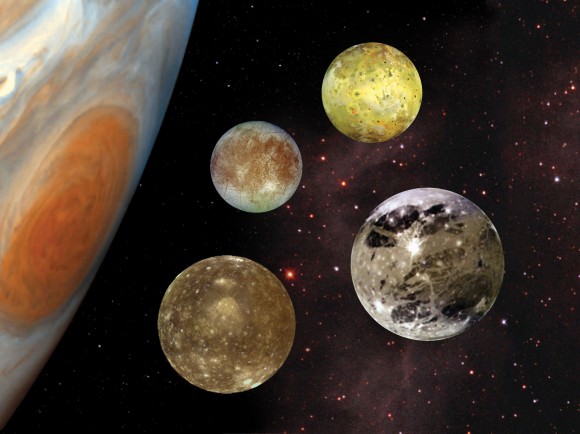
By January 10th, he noted that one had disappeared, which he attributed to it being hidden behind Jupiter. From this, he concluded that the stars were in fact orbiting Jupiter, and they were satellites of it. By January 13th, he discovered a fourth, and named them the Medicean stars, in honor of his future patron, Cosimo II de’ Medici, Grand Duke of Tuscany, and his three brothers.
Later astronomers, however, renamed them the Galilean Moons in honour of their discoverer. By the 20th century, these satellites would come to be known by their current names – Io, Europa, Ganymede, and Callisto – which had been suggested by 17th century German astronomer Simon Marius, apparently at the behest of Johannes Kepler.
Galileo’s observations of these satellites proved to be another major controversy. For the first time, a planet other than Earth was shown to have satellites orbiting it, which constituted yet another nail in the coffin of the geocentric model of the universe. His observations were independently confirmed afterwards, and Galileo continued to observe the satellites them and even obtained remarkably accurate estimates for their periods by 1611.
Galileo’s greatest contribution to astronomy came in the form of his advancement of the Copernican model of the universe (i.e. heliocentrism). This began in 1610 with his publication of Sidereus Nuncius, which brought the issue of celestial imperfections before a wider audience. His work on sunspots and his observation of the Galilean Moons furthered this, revealing yet more inconsistencies in the currently accepted view of the heavens.
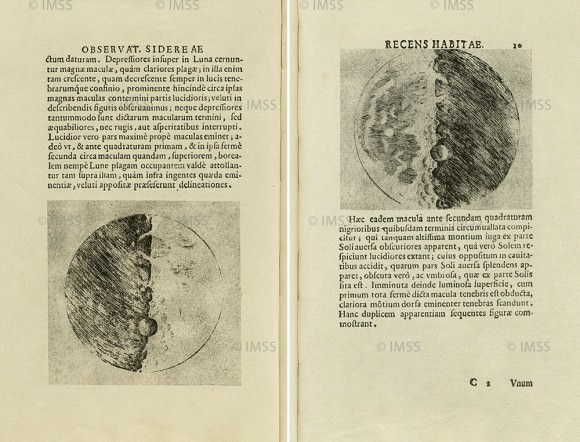
Other astronomical observations also led Galileo to champion the Copernican model over the traditional Aristotelian-Ptolemaic (aka. geocentric) view. From September 1610 onward, Galileo began observing Venus, noting that it exhibited a full set of phases similar to that of the Moon. The only explanation for this was that Venus was periodically between the Sun and Earth; while at other times, it was on the opposite side of the Sun.
According to the geocentric model of the universe, this should have been impossible, as Venus’ orbit placed it closer to Earth than the Sun – where it could only exhibit crescent and new phases. However, Galileo’s observations of it going through crescent, gibbous, full and new phases was consistent with the Copernican model, which established that Venus orbited the Sun within the Earth’s orbit.
These and other observations made the Ptolemaic model of the universe untenable. Thus, by the early 17th century, the great majority of astronomers began to convert to one of the various geo-heliocentric planetary models – such as the Tychonic, Capellan and Extended Capellan models. These all had the virtue of explaining problems in the geocentric model without engaging in the “heretical” notion that Earth revolved around the Sun.
In 1632, Galileo addressed the “Great Debate” in his treatise Dialogo sopra i due massimi sistemi del mondo (Dialogue Concerning the Two Chief World Systems), in which he advocated the heliocentric model over the geocentric. Using his own telescopic observations, modern physics and rigorous logic, Galileo’s arguments effectively undermined the basis of Aristotle and Ptolemy’s system for a growing and receptive audience.
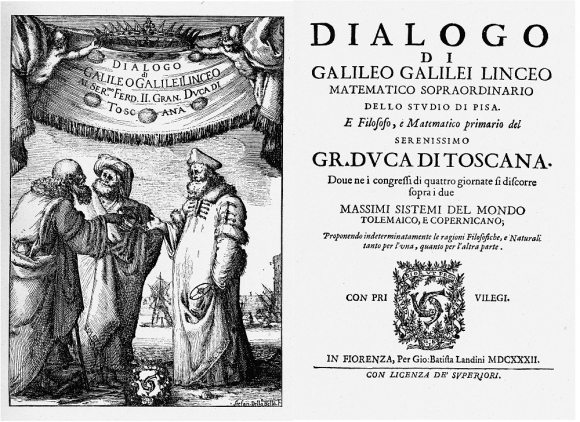
In the meantime, Johannes Kepler correctly identified the sources of tides on Earth – something which Galileo had become interesting in himself. But whereas Galileo attributed the ebb and flow of tides to the rotation of the Earth, Kepler ascribed this behavior to the influence of the Moon.
Combined with his accurate tables on the elliptical orbits of the planets (something Galileo rejected), the Copernican model was effectively proven. From the middle of the seventeenth century onward, there were few astronomers who were not Copernicans.
As a devout Catholic, Galileo often defended the heliocentric model of the universe using Scripture. In 1616, he wrote a letter to the Grand Duchess Christina, in which he argued for a non-literal interpretation of the Bible and espoused his belief in the heliocentric universe as a physical reality:
“I hold that the Sun is located at the center of the revolutions of the heavenly orbs and does not change place, and that the Earth rotates on itself and moves around it. Moreover … I confirm this view not only by refuting Ptolemy’s and Aristotle’s arguments, but also by producing many for the other side, especially some pertaining to physical effects whose causes perhaps cannot be determined in any other way, and other astronomical discoveries; these discoveries clearly confute the Ptolemaic system, and they agree admirably with this other position and confirm it.“
More importantly, he argued that the Bible is written in the language of the common person who is not an expert in astronomy. Scripture, he argued, teaches us how to go to heaven, not how the heavens go.
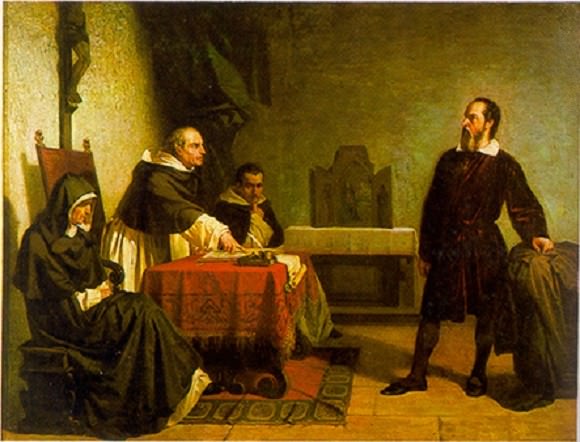
Initially, the Copernican model of the universe was not seen as an issue by the Roman Catholic Church or it’s most important interpreter of Scripture at the time – Cardinal Robert Bellarmine. However, in the wake of the Counter-Reformation, which began in 1545 in response to the Reformation, a more stringent attitude began to emerge towards anything seen as a challenge to papal authority.
Eventually, matters came to a head in 1615 when Pope Paul V (1552 – 1621) ordered that the Sacred Congregation of the Index (an Inquisition body charged with banning writings deemed “heretical”) make a ruling on Copernicanism. They condemned the teachings of Copernicus, and Galileo (who had not been personally involved in the trial) was forbidden to hold Copernican views.
However, things changed with the election of Cardinal Maffeo Barberini (Pope Urban VIII) in 1623. As a friend and admirer of Galileo’s, Barberini opposed the condemnation of Galileo, and gave formal authorization and papal permission for the publication of Dialogue Concerning the Two Chief World Systems.
However, Barberini stipulated that Galileo provide arguments for and against heliocentrism in the book, that he be careful not to advocate heliocentrism, and that his own views on the matter be included in Galileo’s book. Unfortunately, Galileo’s book proved to be a solid endorsement of heliocentrism and offended the Pope personally.
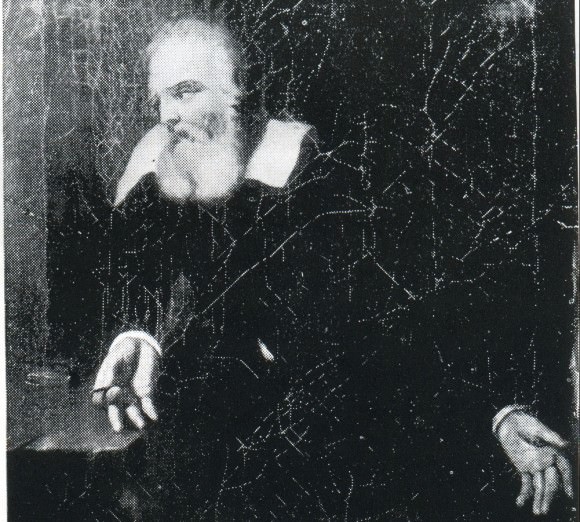
In it, the character of Simplicio, the defender of the Aristotelian geocentric view, is portrayed as an error-prone simpleton. To make matter worse, Galileo had the character Simplicio enunciate the views of Barberini at the close of the book, making it appear as though Pope Urban VIII himself was a simpleton and hence the subject of ridicule.
As a result, Galileo was brought before the Inquisition in February of 1633 and ordered to renounce his views. Whereas Galileo steadfastly defended his position and insisted on his innocence, he was eventually threatened with torture and declared guilty. The sentence of the Inquisition, delivered on June 22nd, contained three parts – that Galileo renounce Copernicanism, that he be placed under house arrest, and that the Dialogue be banned.
According to popular legend, after recanting his theory publicly that the Earth moved around the Sun, Galileo allegedly muttered the rebellious phrase: “E pur si muove” (“And yet it moves” in Latin). After a period of living with his friend, the Archbishop of Siena, Galileo returned to his villa at Arcetri (near Florence in 1634), where he spent the remainder of his life under house arrest.
In addition to his revolutionary work in astronomy and optics, Galileo is also credited with the invention of many scientific instruments and theories. Much of the devices he created were for the specific purpose of earning money to pay for his sibling’s expenses. However, they would also prove to have a profound impact in the fields of mechanics, engineering, navigation, surveying, and warfare.

In 1586, at the age of 22, Galileo made his first groundbreaking invention. Inspired by the story of Archimedes and his “Eureka” moment, Galileo began looking into how jewelers weighed precious metals in air and then by displacement to determine their specific gravity. Working from this, he eventually theorized of a better method, which he described in a treatise entitled La Bilancetta (“The Little Balance”).
In this tract, he described an accurate balance for weighing things in air and water, in which the part of the arm on which the counter weight was hung was wrapped with metal wire. The amount by which the counterweight had to be moved when weighing in water could then be determined very accurately by counting the number of turns of the wire. In so doing, the proportion of metals like gold to silver in the object could be read off directly.
In 1592, when Galileo was a professor of mathematics at the University of Padua, he made frequent trips to the Arsenal – the inner harbor where Venetian ships were outfitted. The Arsenal had been a place of practical invention and innovation for centuries, and Galileo used the opportunity to study mechanical devices in detail.
In 1593, he was consulted on the placement of oars in galleys and submitted a report in which he treated the oar as a lever and correctly made the water the fulcrum. A year later the Venetian Senate awarded him a patent for a device for raising water that relied on a single horse for the operation. This became the basis of modern pumps.
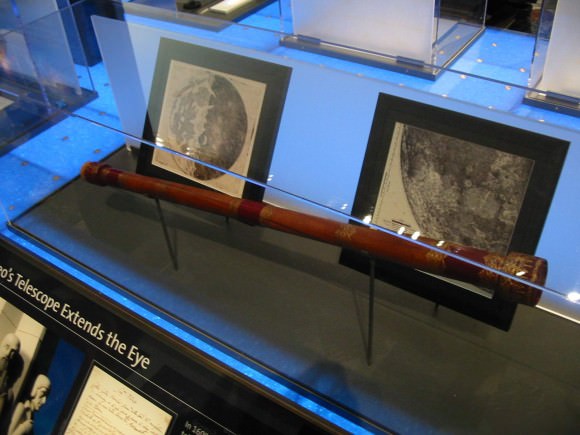
To some, Galileo’s Pump was a merely an improvement on the Archimedes Screw, which was first developed in the third century BCE and patented in the Venetian Republic in 1567. However, there is no apparent evidence connecting Galileo’s invention to Archimedes’ earlier and less sophisticated design.
In ca. 1593, Galileo constructed his own version of a thermoscope, a forerunner of the thermometer, that relied on the expansion and contraction of air in a bulb to move water in an attached tube. Over time, he and his colleagues worked to develop a numerical scale that would measure the heat based on the expansion of the water inside the tube.
The cannon, which was first introduced to Europe in 1325, had become a mainstay of war by Galileo’s time. Having become more sophisticated and mobile, gunners needed instruments to help them coordinate and calculate their fire. As such, between 1595 and 1598, Galileo devised an improved geometric and military compass for use by gunners and surveyors.
During the 16th century, Aristotelian physics was still the predominant way of explaining the behavior of bodies near the Earth. For example, it was believed that heavy bodies sought their natural place of rest – i.e at the center of things. As a result, no means existed to explain the behavior of pendulums, where a heavy body suspended from a rope would swing back and forth and not seek rest in the middle.

Already, Galileo had conducted experiments that demonstrated that heavier bodies did not fall faster than lighter ones – another belief consistent with Aristotelian theory. In addition, he also demonstrated that objects thrown into the air travel in parabolic arcs. Based on this and his fascination with the back and forth motion of a suspended weight, he began to research pendulums in 1588.
In 1602, he explained his observations in a letter to a friend, in which he described the principle of isochronism. According to Galileo, this principle asserted that the time it takes for the pendulum to swing is not linked to the arc of the pendulum, but rather the pendulum’s length. Comparing two pendulum’s of similar length, Galileo demonstrated that they would swing at the same speed, despite being pulled at different lengths.
According to Vincenzo Vivian, one of Galileo’s contemporaries, it was in 1641 while under house arrest that Galileo created a design for a pendulum clock. Unfortunately, being blind at the time, he was unable to complete it before his death in 1642. As a result, Christiaan Huygens’ publication of Horologrium Oscillatorium in 1657 is recognized as the first recorded proposal for a pendulum clock.
Galileo died on January 8th, 1642, at the age of 77, due to fever and heart palpitations that had taken a toll on his health. The Grand Duke of Tuscany, Ferdinando II, wished to bury him in the main body of the Basilica of Santa Croce, next to the tombs of his father and other ancestors, and to erect a marble mausoleum in his honor.
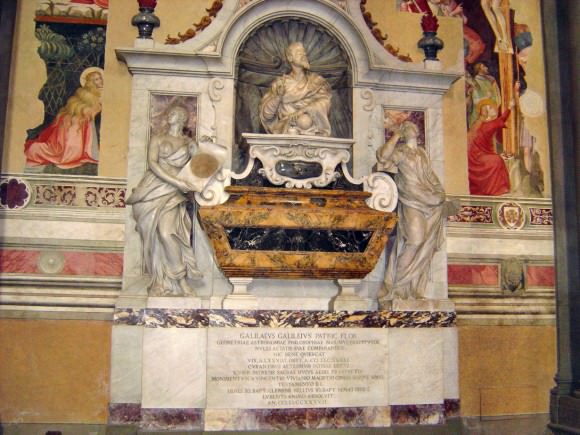
However, Pope Urban VIII objected on the basis that Galileo had been condemned by the Church, and his body was instead buried in a small room next to the novice’s chapel in the Basilica. However, after his death, the controversy surrounding his works and heliocentricm subsided, and the Inquisitions ban on his writing’s was lifted in 1718.
In 1737, his body was exhumed and reburied in the main body of the Basilica after a monument had been erected in his honor. During the exhumation, three fingers and a tooth were removed from his remains. One of these fingers, the middle finger from Galileo’s right hand, is currently on exhibition at the Museo Galileo in Florence, Italy.
In 1741, Pope Benedict XIV authorized the publication of an edition of Galileo’s complete scientific works which included a mildly censored version of the Dialogue. In 1758, the general prohibition against works advocating heliocentrism was removed from the Index of prohibited books, although the specific ban on uncensored versions of the Dialogue and Copernicus’s De Revolutionibus orbium coelestium (“On the Revolutions of the Heavenly Spheres“) remained.
All traces of official opposition to heliocentrism by the church disappeared in 1835 when works that espoused this view were finally dropped from the Index. And in 1939, Pope Pius XII described Galileo as being among the “most audacious heroes of research… not afraid of the stumbling blocks and the risks on the way, nor fearful of the funereal monuments”.
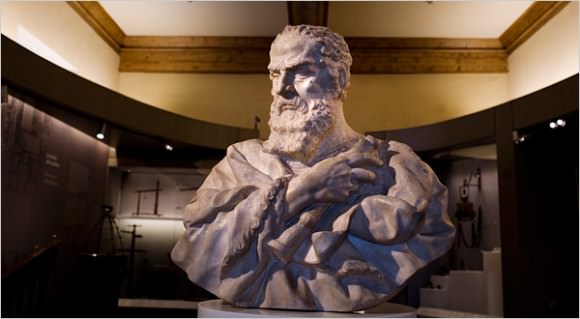
On October 31st, 1992, Pope John Paul II expressed regret for how the Galileo affair was handled, and issued a declaration acknowledging the errors committed by the Catholic Church tribunal. The affair had finally been put to rest and Galileo exonerated, though certain unclear statements issued by Pope Benedict XVI have led to renewed controversy and interest in recent years.
Alas, when it comes to the birth of modern science and those who helped create it, Galileo’s contributions are arguably unmatched. According to Stephen Hawking and Albert Einstein, Galileo was the father of modern science, his discoveries and investigations doing more to dispel the prevailing mood of superstition and dogma than anyone else in his time.
These include the discovery of craters and mountains on the Moon, the discovery of the four largest moons of Jupiter (Io, Europa, Ganymede and Callisto), the existence and nature of Sunspots, and the phases of Venus. These discoveries, combined with his logical and energetic defense of the Copernican model, made a lasting impact on astronomy and forever changed the way people look at the universe.
Galileo’s theoretical and experimental work on the motions of bodies, along with the largely independent work of Kepler and René Descartes, was a precursor of the classical mechanics developed by Sir Isaac Newton. His work with pendulums and time-keeping also previewed the work of Christiaan Huygens and the development of the pendulum clock, the most accurate timepiece of its day.
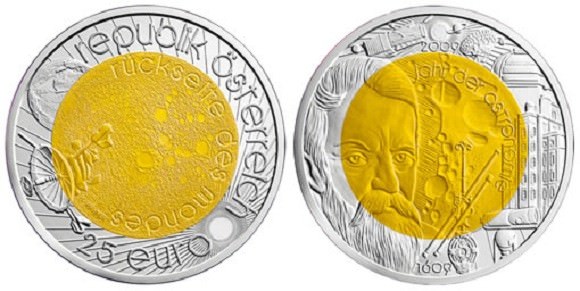
Galileo also put forward the basic principle of relativity, which states that the laws of physics are the same in any system that is moving at a constant speed in a straight line. This remains true, regardless of the system’s particular speed or direction, thus proving that there is no absolute motion or absolute rest. This principle provided the basic framework for Newton’s laws of motion and is central to Einstein’s special theory of relativity.
The United Nations chose 2009 to be the International Year of Astronomy, a global celebration of astronomy and its contributions to society and culture. The year 2009 was selected in part because it was the four-hundredth anniversary of Galileo first viewing the heavens with his a telescope he built himself.
A commemorative €25 coin was minted for the occasion, with the inset on the obverse side showing Galileo’s portrait and telescope, as well as one of his first drawings of the surface of the moon. In the silver circle that surrounds it, pictures of other telescopes – Isaac Newton’s Telescope, the observatory in Kremsmünster Abbey, a modern telescope, a radio telescope and a space telescope – are also shown.
Other scientific endeavors and principles are named after Galileo, including the NASA Galileo spacecraft, which was the first spacecraft to enter orbit around Jupiter. Operating from 1989 to 2003, the mission consisted of an orbiter that observed the Jovian system, and an atmospheric probe that made the first measurements of Jupiter’s atmosphere.
This mission found evidence of subsurface oceans on Europa, Ganymede and Callisto, and revealed the intensity of volcanic activity on Io. In 2003, the spacecraft was crashed into Jupiter’s atmosphere to avoid contamination of any of Jupiter’s moons.
The European Space Agency (ESA) is also developing a global satellite navigation system named Galileo. And in classical mechanics, the transformation between inertial systems is known as “Galilean Transformation“, which is denoted by the non-SI unit of acceleration Gal (sometimes known as the Galileo). Asteroid 697 Galilea is also named in his honor.
Yes, the sciences and humanity as a whole owes a great dept to Galileo. And as time goes on, and space exploration continues, it is likely we will continue to repay that debt by naming future missions – and perhaps even features on the Galilean Moons, should we ever settle there – after him. Seems like a small recompense for ushering in the age of modern science, no?
Universe Today has many interesting articles on Galileo, include the Galilean moons, Galileo’s inventions, and Galileo’s telescope.
For more information, check out the the Galileo Project and Galileo’s biography.
Astronomy Cast has an episode on choosing and using a telescope, and one which deals with the Galileo Spacecraft.